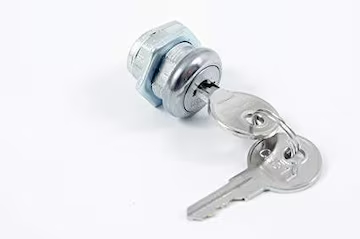In today’s world, tools are an essential part of both professional and DIY projects. Whether you’re a contractor, a mechanic, or a weekend warrior, the tools you rely on represent a significant investment in both time and money. Therefore, ensuring their safety and security is paramount. One of the most effective ways to protect your tools is through the use of tool box locks. These locks serve not only as a deterrent against theft but also as a means of keeping tools organised and secure from unauthorised access. In this article, we’ll explore the importance of toolbox locks, their various types, and tips for selecting the right lock for your needs.
The Importance Of Toolbox Locks
Theft Prevention
One of the primary reasons for investing in a toolbox lock is to prevent theft. Tools can be quite expensive and losing them to theft can be a significant setback, both financially and in terms of project timelines. A locked toolbox acts as a formidable barrier against opportunistic thieves, making it less likely for them to target your equipment. When a thief sees a toolbox that is easily accessible, the temptation to steal tools increases. However, a secure lock can deter theft, providing peace of mind whether you are at a job site or working in your garage.
Organisation And Safety
A locked toolbox not only secures your tools but also helps maintain organisation. With a lock in place, you can keep tools in a designated area, reducing the chances of misplacing them. This organisation is vital in preventing accidents and injuries, especially in environments where multiple people are present. When tools are left unsecured, they can become hazards, potentially causing injuries to those who may trip over them or mishandle them. A locked toolbox ensures that tools remain in their designated space, promoting a safer work environment.
Protecting Your Investment
Tools are an investment, and like any investment, they need protection. High-quality tools can be pricey, and if you don’t store and care for them properly, they may not last as long. A toolbox lock safeguards your tools from the elements, as well. Water, dirt, and other things in the world can cause things to rust and break down. By locking your tools away, you help prolong their life and maintain their functionality, ultimately saving you money in the long run.
Types Of Toolbox Locks
Padlocks
Padlocks are among the most common types of locks used on toolboxes. They come in various sizes and can be key-operated or combination-based. Padlocks offer flexibility as they can be used on different types of toolboxes, whether metal, plastic, or wood. They are easily replaceable, making them a practical option for many users.
Built-In Locks
Many modern toolboxes come with built-in locking mechanisms. These locks are typically more secure than standard padlocks, as they are integrated into the toolbox’s design. Built-in locks often feature more advanced security mechanisms, such as keyless entry or electronic locks, providing added convenience and security.
Combination Locks
Combination locks are another option for securing toolboxes. These locks do not require keys and instead rely on a numerical code. The advantage of combination locks is that they eliminate the risk of losing keys. However, it’s essential to choose a combination that is not easily guessed to maintain security.
Tips For Choosing The Right Toolbox Lock
Consider Your Environment
The first step in selecting a toolbox lock is to consider where you will be using the toolbox. If you work in an environment prone to theft, opt for a heavy-duty padlock or a built-in locking mechanism that offers high security. On the other hand, if you are using the toolbox at home, a standard padlock may suffice.
Evaluate Security Features
Not all locks are created equal. When selecting a lock, consider features such as hardened steel construction, anti-pick technology, and weather resistance. Locks with advanced security features will provide better protection against tampering and unauthorised access.
Test For Ease Of Use
A lock should be secure but also easy to use. Ensure that you can open and close the lock without difficulty. If you opt for a combination lock, practice entering the code to ensure that it’s not only secure but also convenient for your regular use.
Maintenance And Care
Like any other component of your toolbox, locks require maintenance. Periodically check your locks for rust or damage and lubricate them to ensure smooth operation. A well-maintained lock will perform better and last longer.
Conclusion
Toolbox locks are a key element in ensuring the safety and protection of your tools. They not only deter theft but also promote organisation and prolong the lifespan of your valuable equipment. There are many kinds of locks out there, so it’s important to pick one that works for your wants and the space you’re in. By investing in a reliable toolbox lock, you protect your tools and ensure that they remain secure, organised, and ready for use whenever you need them.




